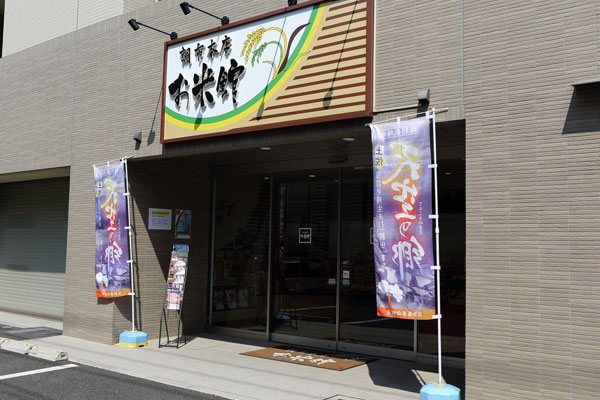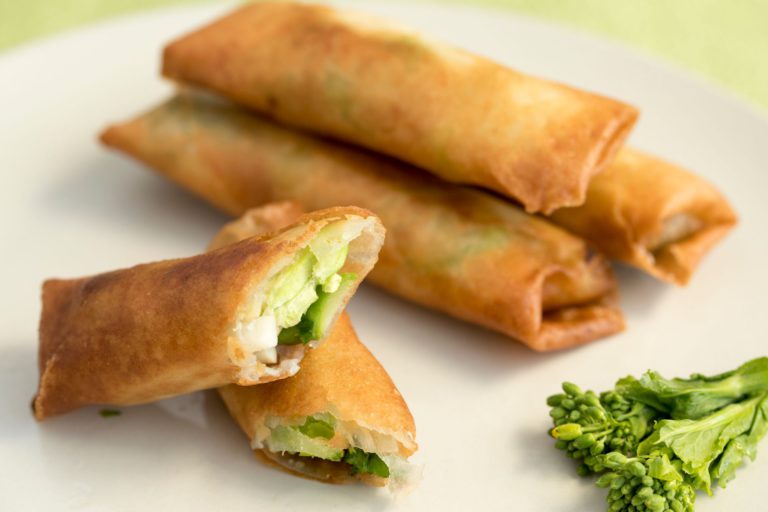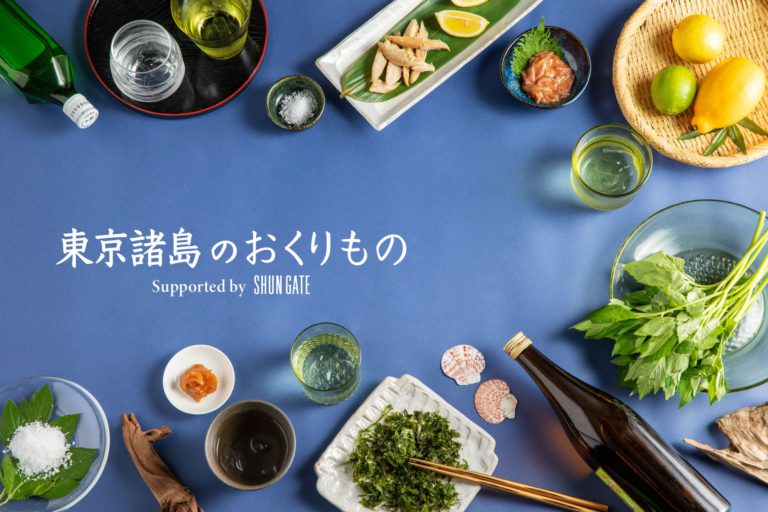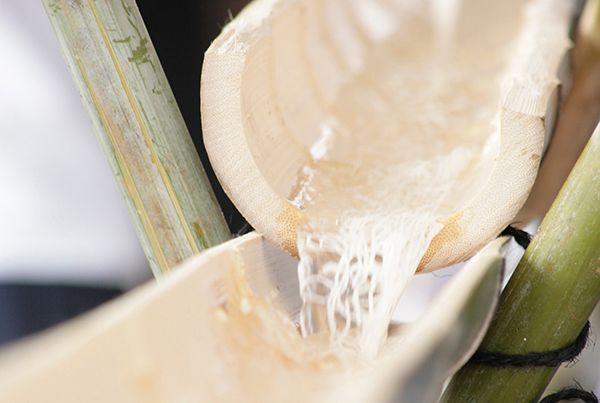One of Japan’s most esteemed rice retailers proposes a new rice culture
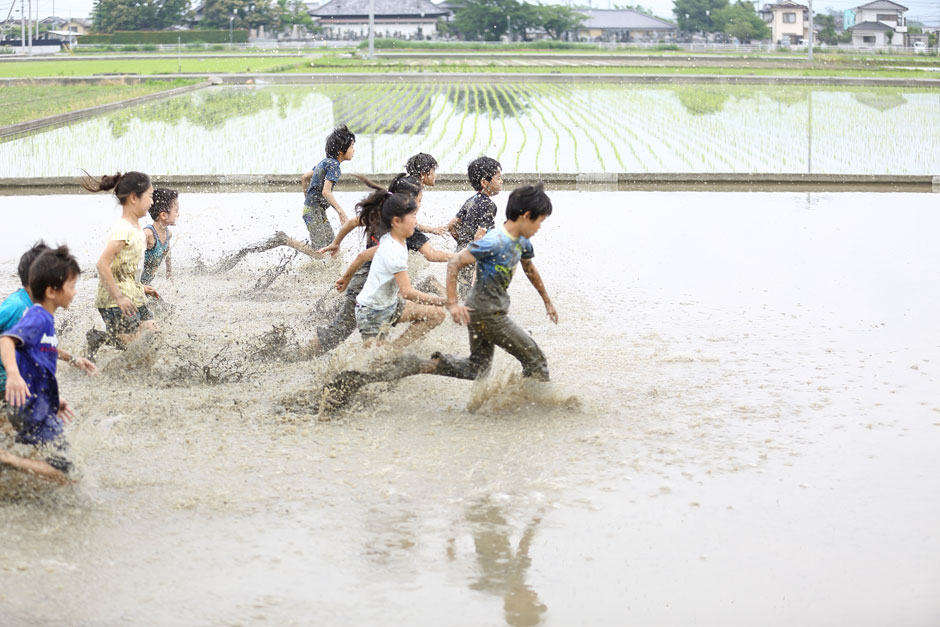
Growing good rice: Four seasons and a lot of hard work
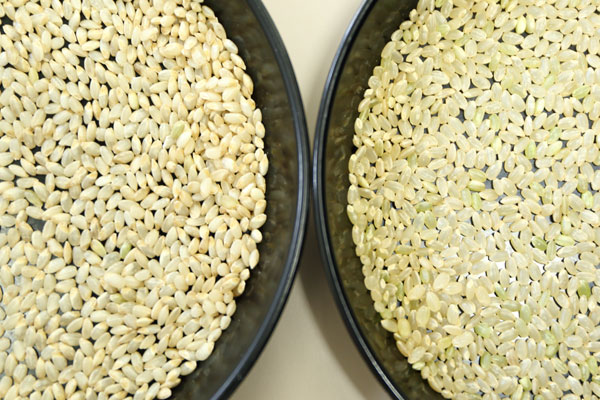
Rice cultivation goes hand in hand with Japan’s four seasons. Rice is planted during the emergence of beautiful fresh greenery in early summer, where it is then nurtured by the summer sun as water from melted snow flows down from the mountains to fill the paddy fields. The autumn harvesting of golden stalks of rice marks the beginning of Japan’s Shinmai (newly harvested rice) season. This is the time of year when consumers get to enjoy rice as it first comes into season.
Growing good rice comes down to more than just the right season and climate, of course. The loving, nurturing care of the farmers is another key ingredient. In fact, the Japanese character for “rice” (米) is made up of characters that, when taken individually, represent 88 (八十八). This implies that it takes 88 steps to cultivate rice. In recent years, more rice producers are turning to organic fertilizers and reducing their use of insecticides and herbicides. Technological innovations have also been made in terms of improving the varieties of rice that are available. Rice production is evolving every day as rice producers seek to produce ever better and tastier rice.
Different types of rice for different occasions: New ways of enjoying rice
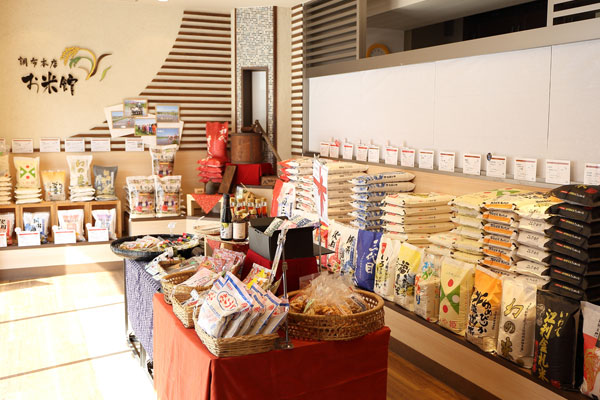
Established in 1905, Yamadaya Honten is a specialty rice retailer that offers a wide array of carefully selected rice from across the nation.
The rice is selected by region, agricultural cooperative, and producer so that consumers can see who produced the rice and how. Yamadaya Honten is also devoted to the development of rice-refining technologies, because this is a determining factor in the taste of rice. In fact, it has built a large rice refining plant in Yamanashi Prefecture and is committed to strict quality control.
“Rice is no longer Japan’s staple food,” says Atsuo Akizawa, CEO of Yamadaya Honten.
Having taken the reins at a retailer that has been in the rice business for nearly 110 years, Mr. Akizawa is a true master of rice.
Reflecting on the changing relationship between Japanese people and rice, he had the following to say: “How many times a day do we eat rice nowadays? It used to be three times a day, but now rice has to compete with bread and pasta. Today, you can buy rice at supermarkets, drugstores, and even online. To differentiate ourselves from the competition, we must, of course, offer good, tasty rice, but as rice experts, we also need to suggest new ways of enjoying rice.”
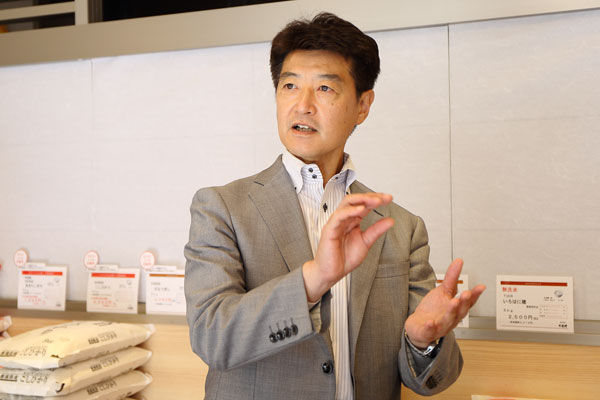
So what are these new ways of enjoying rice? Believing that consumers should select rice that goes well with a particular food or occasion, Yamadaya Honten has created the Taste Matrix, a unique chart for evaluating rice brands based on attributes such as stickiness and texture.
Using this matrix, consumers are able to see not only which rice will best match their tastes, but also which rice has the best texture or taste for particular dishes, like sushi and curry. Yamada Honten also provides recommendations on the best rice for special occasions, such as birthdays or the passing of exams. Just like wine, rice can now be matched to a specific situation.
“There are so many rice brands in Japan and they all taste differently. I would like to make people more aware of the fun they can have selecting and matching rice. We also sell rice in small quantities?starting from 1 kg?so I hope people will try buying small amounts of different types of rice for their special occasions, and not just stick to their usual rice. I think this will help people realize that rice can be enjoyed in a variety of different ways.”
Recommendations from a rice master: Which types of rice are “in”?
There are trends for just about everything in the world, and rice is no different. Apparently, sticky varieties of rice such as Milky Queen and Yumepirika?both of which come from a variety of rice called Koshihikari?have been popular brands recently. So which types of rice are “in” right now?
We asked Mr. Akizawa for his view.
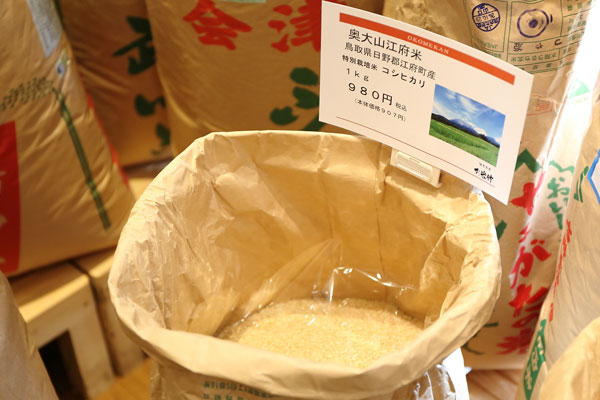
(1)Okudaisen Kofu Rice from Tottori Prefecture
“This type of rice is from the town of Kofu, which is located in Okudaisen in the western part of Tottori Prefecture. There is a beech forest at the foot of Mt. Daisen and the water that filters through the tree roots there is really clean. Until recently, we didn’t really stock rice from the western part of Japan, but we heard about this rice sometime after the Great East Japan Earthquake of March 11, 2011. It’s very chewy and sticky, and the more you chew it, the tastier and sweeter it gets. It’s also perfect for bento boxes because it stays tasty even when it cools.”
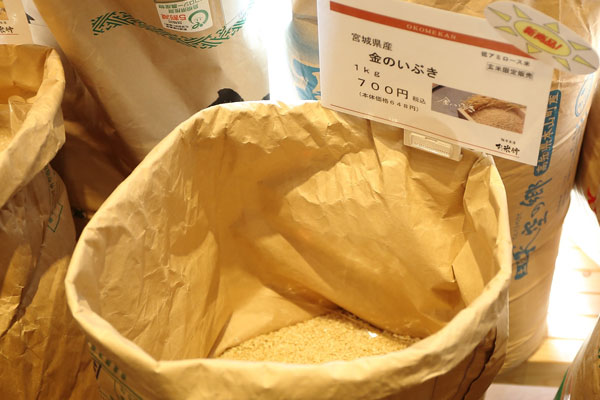
(2)Kin-no-Ibuki from Miyagi Prefecture
“If you look at the germs of this brown rice you can see that they are three times larger than normal. A lot of people aren’t keen on brown rice because it needs to be soaked in water for a long time and it has a distinct texture and taste. But this brown rice can be cooked just like white rice, and it has a texture that is much like that of white rice. Despite this, it is very sticky and has the lovely graininess asso-ciated with brown rice. It’s highly nutritious because of its large germs. I hope that a lot of people will try this rice and that they will enjoy it just as much as they do white rice.”
Ikimono Mikke Farm Project: Nurturing future rice lovers
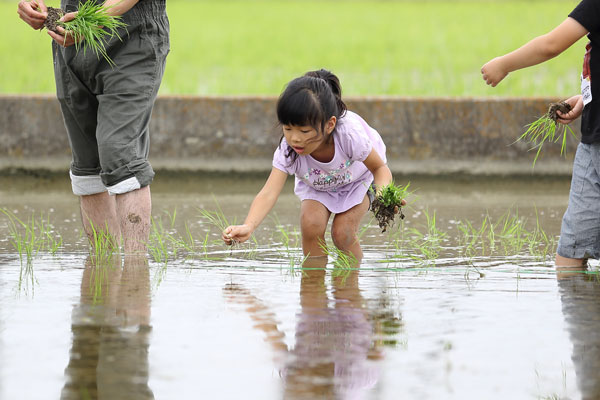
Since 2014, Yamadaya Honten has been running Ikimono Mikke Farm, a project it organized with regional governments and rice producers. Yamadaya invites families with young children to a paddy field in Chuo City, Yamanashi Prefecture, where it operates a rice refining plant. There, the parents and children get to enjoy helping with the rice cultivation and watching the small creatures that live in paddy fields. This is all part of Yamadaya’s efforts to offer hands-on experience in environmental education.
In June this year, 70 parents and children participated in a rice-planting event. Under the supervision of local rice producers, they tried their inexperienced hands at planting rice and enjoyed playing with the crawfish and dragonfly larvae in the paddy field.
The children then got together with some of the local children to play “muddy dodgeball” in the paddy field. At lunchtime, they got to try some food made with local rice and vegetables. This project offers participants a chance to enjoy all of the leisure activities that nature has to offer at a site used for rice production.
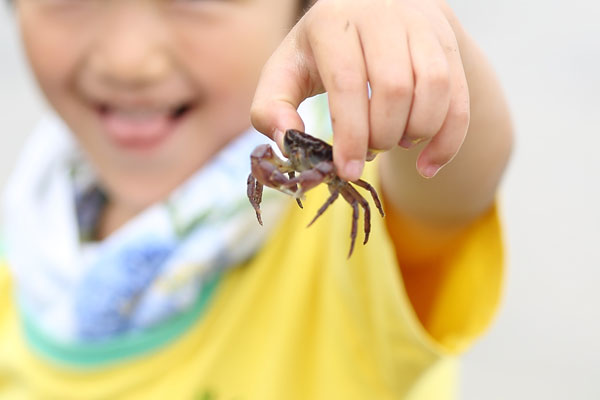
The families planted Hinohikari rice, which is a high quality rice that was originally cultivated in abundance in Kyushu. A once popular Japanese saying is: “Koshihikari of the east; Hinohikari of the west.” The Hinohikari rice harvested from the rice paddies of Ikimono Mikke Farm will be sold at Yamadaya Honten’s store.
“Paddy fields are not just a place to grow rice. They also serve as the habitat for a variety of creatures. I hope that Ikimono Mikke Farm will be able to teach children the importance of people living in harmony with other creatures. It would be wonderful if it also helped them develop a deeper love of rice,” says Mr. Akizawa.
Mr. Akizawa will continue to pursue his goal of ensuring a bright future for rice by serving as a link between rice consumers and producers.
Rice brands recommended by Yamadaya Honten
Tsuyahime Meijinkai (a specially cultivated type of Tsuyahime rice from Tsuruoka City, Yamagata Prefecture)
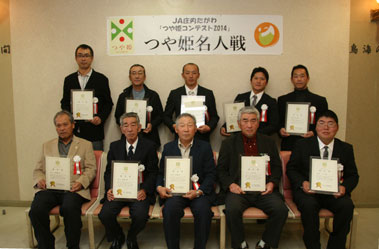
Tsuruoka City, Yamagata Prefecture
This rice was jointly developed by Yamadaya Honten and JA-Shonai Tagawa, with the latter acting as the production supervisor. JA-Shonai Tagawa boasts the largest cultivation area for Tsuyahime rice in all of Yamagata, as well as the largest group of Tsuyahime producers, with a total of 1,052 masters officially certified by the prefecture.
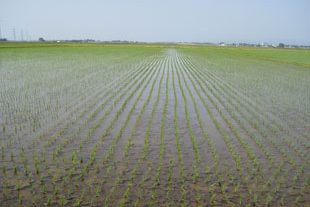
These producers entered the Tsuyahime Contest, to which they brought some of their own Tsuyahime produce from designated paddy fields. Ten grand masters of Tsuyahime, known as the Tsuyahime Meijin, won the contest after a strict selection process had been undertaken to choose the best Tsuyahime rice in the following categories: unpolished, polished, and cooked. This ultimate Tsuyahime is a premium rice in every way in that it gets sweeter the more it is chewed and that it has unrivaled whiteness, shine and flavor.
Komeya Hikotaro × Meshimaru Genkitsukushi (a specially cultivated type of Genkitsukushi rice from Kaho District, Fukuoka Prefecture)
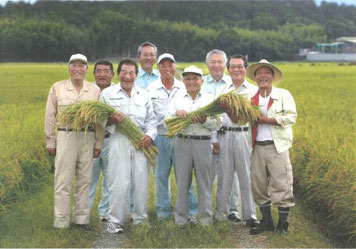
Kaho District, Fukuoka Prefecture
Komeya Hikotaro × Meshimaru Genkitsukushi is a type of rice that is carefully selected by Komeya Hikotaro* from the produce of Fukuoka Prefecture’s 20 Japan Agricultural Cooperatives based on various rice attributes, such as texture and taste. Delicious when freshly cooked, this rice stays tasty even when it cools. As it retains its stickiness, it is also perfect for making bento boxes and rice balls because each individual grain remains intact when the rice is cooked.
* Komeya Hikotaro is a specialty rice store run by Yamadaya Honten in the Ginza branch of the Mitsukoshi Department Store.
Takata-no-Yume (Takata-no-Yume from Rikuzentakata City, Iwate Prefecture)
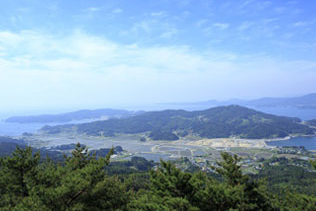
Rikuzentakata City, Iwate Prefecture
Located in Iwate Prefecture, Rikuzentakata City suffered a tremendous amount of damage in the Great East Japan Earthquake. In the wake of the disaster, the people of the city came together to create Takata-no-Yume, a new brand of rice intended to serve as a symbol of hope for the city’s future.
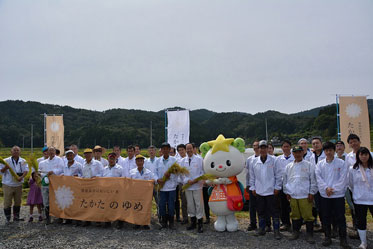
It has a beautifully glossy appearance, a clean taste with a unique sweetness, and a deliciously sticky texture. Not only that, it can be cultivated with a reduced amount of herbicides and insecticides, as it has a high resistance to lodging and rice blast.
Ikimono Mikke Farm no Okome (a type of Hinohikari rice from Chuo City, Yamanashi Prefecture)
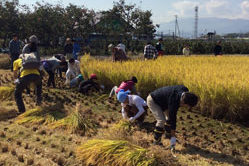
Chuo City, Yamanashi Prefecture
Ikimono Mikke Farm is a place where children can enjoy a variety of activities related to food, agriculture and the environment. By offering these activities in a natural environment, Yamadaya Honten provides city children with an opportunity to learn about nature and the importance of producing food in the right environment.
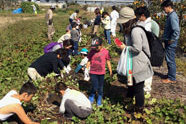
The rice that the children plant and harvest is cultivated through sustainable agriculture, using fertilizers made from the rice husks that are produced when the rice is polished. This delicious rice is a product of the efforts of not only the producers, but also a variety of other parties, including consumers.

